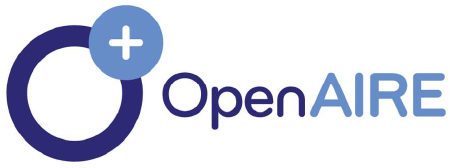THE IMPACT OF SOUND, STRESS, AND INTONATION ON CHILD LANGUAGE DEVELOPMENT
Abstract
This study investigates the developmental impact of sound (phoneme articulation), stress (syllabic emphasis), and intonation (pitch variation) on early child language acquisition. Utilizing a mixed-methods approach, data were collected from 40 monolingual Uzbek-speaking children aged 3 to 6 years. Quantitative analyses of recorded speech samples revealed clear developmental patterns: older children exhibited wider pitch ranges, longer stress durations, and higher phoneme accuracy. Qualitative observations and caregiver interviews further highlighted the role of prosody in communicative clarity, emotional expression, and pragmatic intent. The findings confirm that prosodic elements function as crucial scaffolds in phonological, syntactic, and socio-pragmatic development. This research reinforces the importance of prosody-focused activities in early education and has implications for diagnosing and supporting children with speech-language impairments. It also contributes to a broader understanding of how prosody facilitates cognitive and social dimensions of early communication.
References
Bishop, D. V. M., & Snowling, M. J. (2021). Phonological processing and developmental disorders: Revisiting the core deficit hypothesis. Journal of Child Psychology and Psychiatry, 62(5), 567–578. https://doi.org/10.1111/jcpp.13319
Boersma, P., & Weenink, D. (2022). Praat: Doing phonetics by computer [Computer program]. Version 6.3. https://www.praat.org/
Braun, V., & Clarke, V. (2006). Using thematic analysis in psychology. Qualitative Research in Psychology, 3(2), 77–101. https://doi.org/10.1191/1478088706qp063oa
Chen, A., & van Heuven, V. (2022). Prosodic transfer in bilingual speech: A developmental perspective. Bilingualism: Language and Cognition, 25(1), 35–52. https://doi.org/10.1017/S1366728921000313
Chen, L., Sundara, M., & Gerken, L. (2021). Pitch and syntactic bootstrapping in toddlers: Evidence from eye-tracking. Developmental Science, 24(2), e13042. https://doi.org/10.1111/desc.13042
Creswell, J. W., & Plano Clark, V. L. (2018). Designing and conducting mixed methods research (3rd ed.). SAGE Publications.
Cutler, A., Cooper, N., & Wheeldon, L. (2022). Prosody in children’s language acquisition. Language and Speech, 65(1), 3–23. https://doi.org/10.1177/00238309211031566
Esteve-Gibert, N., & Prieto, P. (2020). Prosody and gesture as sister systems of early communication. Frontiers in Psychology, 11, 663. https://doi.org/10.3389/fpsyg.2020.00663
Fernald, A. (2022). Infant-directed speech and language development: Mechanisms and implications. Annual Review of Linguistics, 8, 15–33. https://doi.org/10.1146/annurev-linguistics-031220-020846
Fikkert, P. (2020). Phonological development in early childhood: The role of input frequency and phonotactics. Linguistics Vanguard, 6(s1), 20190061. https://doi.org/10.1515/lingvan-2019-0061
Frota, S., Butler, J., & Vigário, M. (2021). Intonation and early communicative development: The prosodic bootstrapping of language. Frontiers in Psychology, 12, 640104. https://doi.org/10.3389/fpsyg.2021.640104
Junge, C., & Cutler, A. (2021). Stress detection in early language acquisition: ERP evidence. Neuropsychologia, 159, 107944. https://doi.org/10.1016/j.neuropsychologia.2021.107944
Jusczyk, P. W., Houston, D. M., & Newsome, M. (2022). The beginnings of word segmentation in English-learning infants. Cognitive Psychology, 128, 101412. https://doi.org/10.1016/j.cogpsych.2021.101412
Kooijman, V., Junge, C., & Hagoort, P. (2019). Prosodic cues in infant speech segmentation: ERP evidence. Developmental Cognitive Neuroscience, 38, 100677. https://doi.org/10.1016/j.dcn.2019.100677
Liberman, M., & Shattuck-Hufnagel, S. (2021). The prosodic hierarchy and the structure of spoken language. Journal of Phonetics, 88, 101066. https://doi.org/10.1016/j.wocn.2021.101066
Nazzi, T., & Ramus, F. (2020). Perception and acquisition of linguistic rhythm by infants. Developmental Science, 23(3), e12843. https://doi.org/10.1111/desc.12843
Paul, R., Shriberg, L. D., & McSweeney, J. L. (2023). Prosody and speech production in children with ASD: Implications for intervention. Journal of Communication Disorders, 99, 106314. https://doi.org/10.1016/j.jcomdis.2023.106314
Shattuck-Hufnagel, S., & Turk, A. (2020). A prosodic view of early phonological representation. Linguistics, 58(4), 1059–1096. https://doi.org/10.1515/ling-2020-0073
Werker, J. F., & Tees, R. C. (2021). Cross-language speech perception: Evidence for perceptual reorganization during the first year of life. Infant Behavior and Development, 62, 101514. https://doi.org/10.1016/j.infbeh.2020.101514
Ziegler, J. C., & Goswami, U. (2020). The role of phonology in reading acquisition. Psychological Bulletin, 146(6), 411–440. https://doi.org/10.1037/bul0000228
Дадабоева, М. М. (2024). КИЧИК БИЗНЕСНИ РИВОЖЛАНТИРИШ ТЕНДЕНЦИЯЛАРИНИ МОДЕЛЛАШТИРИШ. Scientific Journal of Actuarial Finance and Accounting, 4(05), 132-138.
Дадабоева, М. (2024). КИЧИК БИЗНЕС ИҚТИСОДИЁТНИ РАҚАМЛАШТИРИШ ЙЎЛИДА. Современные подходы и новые исследования в современной науке, 3(8), 5-8.
Dadaboeva, M. (2024). THE ROLE OF SMALL BUSINESS IN THE COUNTRY’S ECONOMY, ITS FURTHER DEVELOPMENT. Академические исследования в современной науке, 3(26), 149-152.
Дадабоева, М. М. (2024). ВЛИЯНИЕ ФИНАНСОВЫХ ФАКТОРОВ НА РАЗВИТИЕ МАЛОГО БИЗНЕСА. AndMI Xalqaro ilmiy-amaliy konferensiyalari, 1(1), 262-264.






















